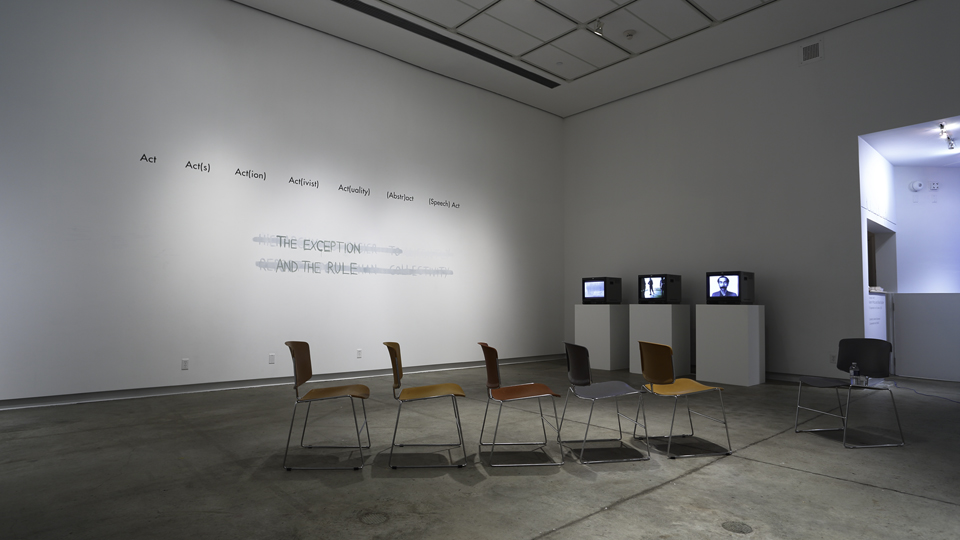Brad Butler and Karen Mirza are an artistic duo based in London. Since the 1990s, their distinct and unique artistic expression has brought them together to produce thought-provoking art, some of which has made its way to UTM for this year’s opening of our own Blackwood Gallery.
On Wednesday, September 19, students, staff, faculty, and guests gathered in the gallery to explore abuse of power, neglect, protest, and imposing human morals in an unjust society as part of an artistic project entitled “The House of the Unexpected”.
On entering, the viewer unmasks herself: she becomes free of prejudice, barriers become her nonchalant windows, and she slowly enters the gallery footstep by footstep, through the so-called “strategies of dissensus”. Around her four white walls stare blankly, allowing her to easily take in each artwork. At this point, she might ask herself, “How can I understand the chaotic world merely by an image in an empty space?”
By learning to accept.
What is acceptance? Allowing oneself to comprehend the injustices of modern society and striving to change them during our finite lives.
To our dismay, the morbid horror of the two world wars our planet and people have experienced cannot be taken back, yet in a way they serve as a monument to teach us to search for tolerance, respect, and love.
Take a minute now, as you read, to think about all the people you have lost throughout your life—be it through disease, war, or old age. This hardship that slaps us in the face, wears us down, tears us into pieces, is also responsible for forming us into a stronger individual—made of something indestructible.
So what can you do? Well, you can sit around and do nothing—which seems to suffice for most people. However, if you feel a twinge of excitement and change, you may choose to protest.
Everyone has their own understanding of protest, but speaking broadly—in the interests of this article and the continuation of humankind—I will talk about the most peaceful method: communication.
Art is a medium for communication. Through analyzing or even just staring at a piece of art, the viewer automatically opens a page of an artist’s diary. After reading that page, the viewer comes away with a message and leaves the gallery with a plan—or at least a goal—to change some aspect of their life or the world.
Imagine what would happen if tomorrow every student on campus walked into “The House of the Unexpected” and it touched even every third viewer in some way. For one thing, we’d have a lot more appreciation of art, but more importantly, humankind would have taken a step towards a better world.



